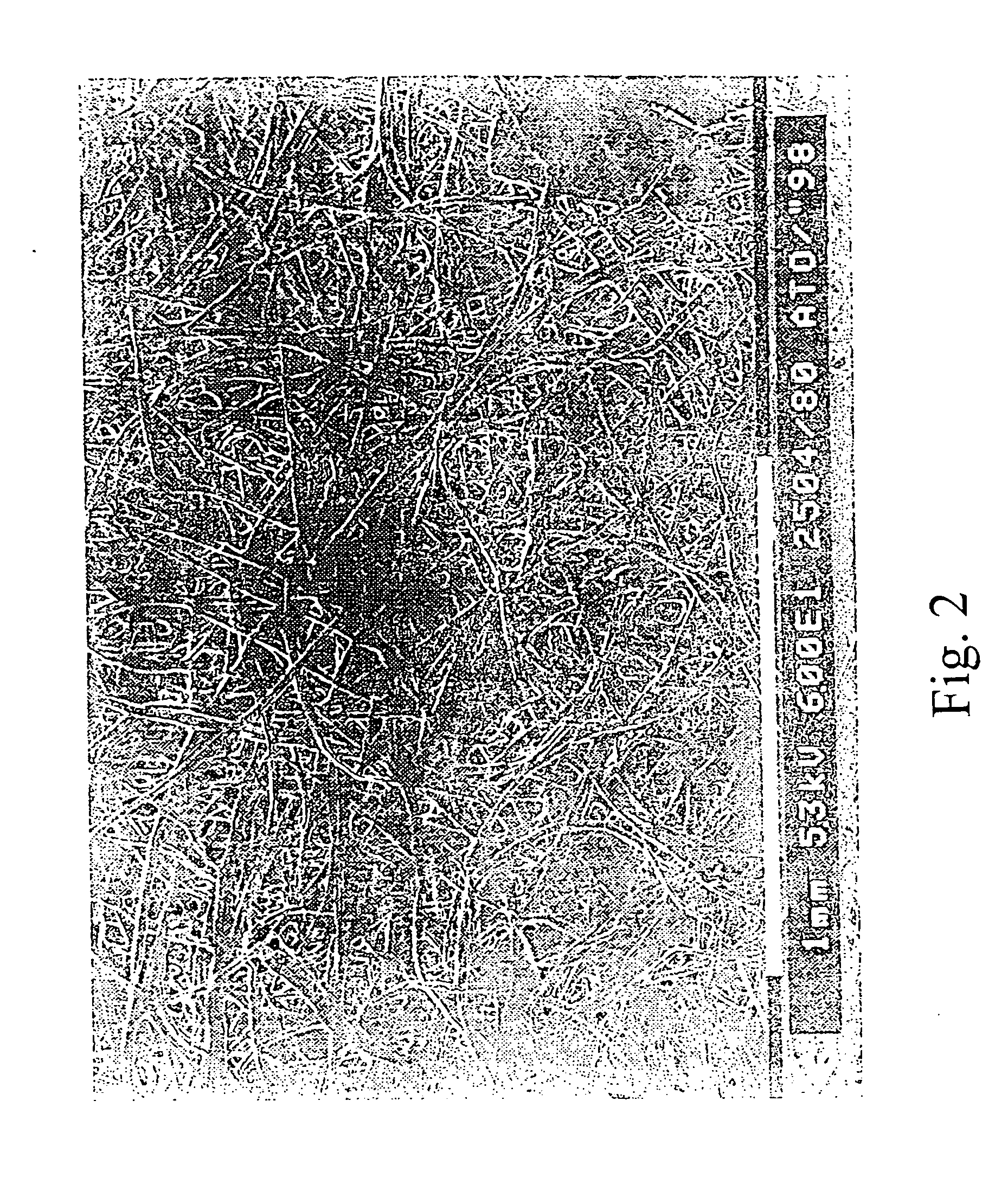Transfer paper for printing with an inkjet printer
a technology of transfer paper and inkjet printer, which is applied in the field of transfer paper, can solve the problems of high paper consumption, high cost of printing form, and high cost of small batches (small lengths) or samplings, and achieve the effect of low paper consumption and high transfer efficiency
- Summary
- Abstract
- Description
- Claims
- Application Information
AI Technical Summary
Benefits of technology
Problems solved by technology
Method used
Image
Examples
Embodiment Construction
[0037] In accordance with a preferred embodiment of the present invention, a suitable layer to be applied to the paper is a hydrophilic polymer such as, for instance, polyvinyl alcohol, carboxymethylcellulose, alginate and gelatin or mixtures thereof, preferably carboxymethylcellulose. In a preferred embodiment of the present invention, carboxymethylcellulose having a degree of substitution (DS) of from about 0.2 to 0.3 is used.
[0038] In a preferred embodiment, the paper is provided with such a layer of carboxymethylcellulose that the layer has a porosity of at most 100 ml / min, more preferably at most 75 ml / min, and most preferably from 0 to 25 ml / min.
[0039] The release or barrier layer may also comprise fillers such as, for instance, kaolin, talcum and the like. This filler can be used in an amount of up to 15 wt. % as long as the properties of the layer are not adversely affected thereby. Also, to the release or barrier layer, or to the filler or the support paper, a non-transfe...
PUM
| Property | Measurement | Unit |
|---|---|---|
| Fraction | aaaaa | aaaaa |
| Volumetric flow rate | aaaaa | aaaaa |
| Volumetric flow rate | aaaaa | aaaaa |
Abstract
Description
Claims
Application Information
 Login to View More
Login to View More - R&D
- Intellectual Property
- Life Sciences
- Materials
- Tech Scout
- Unparalleled Data Quality
- Higher Quality Content
- 60% Fewer Hallucinations
Browse by: Latest US Patents, China's latest patents, Technical Efficacy Thesaurus, Application Domain, Technology Topic, Popular Technical Reports.
© 2025 PatSnap. All rights reserved.Legal|Privacy policy|Modern Slavery Act Transparency Statement|Sitemap|About US| Contact US: help@patsnap.com



